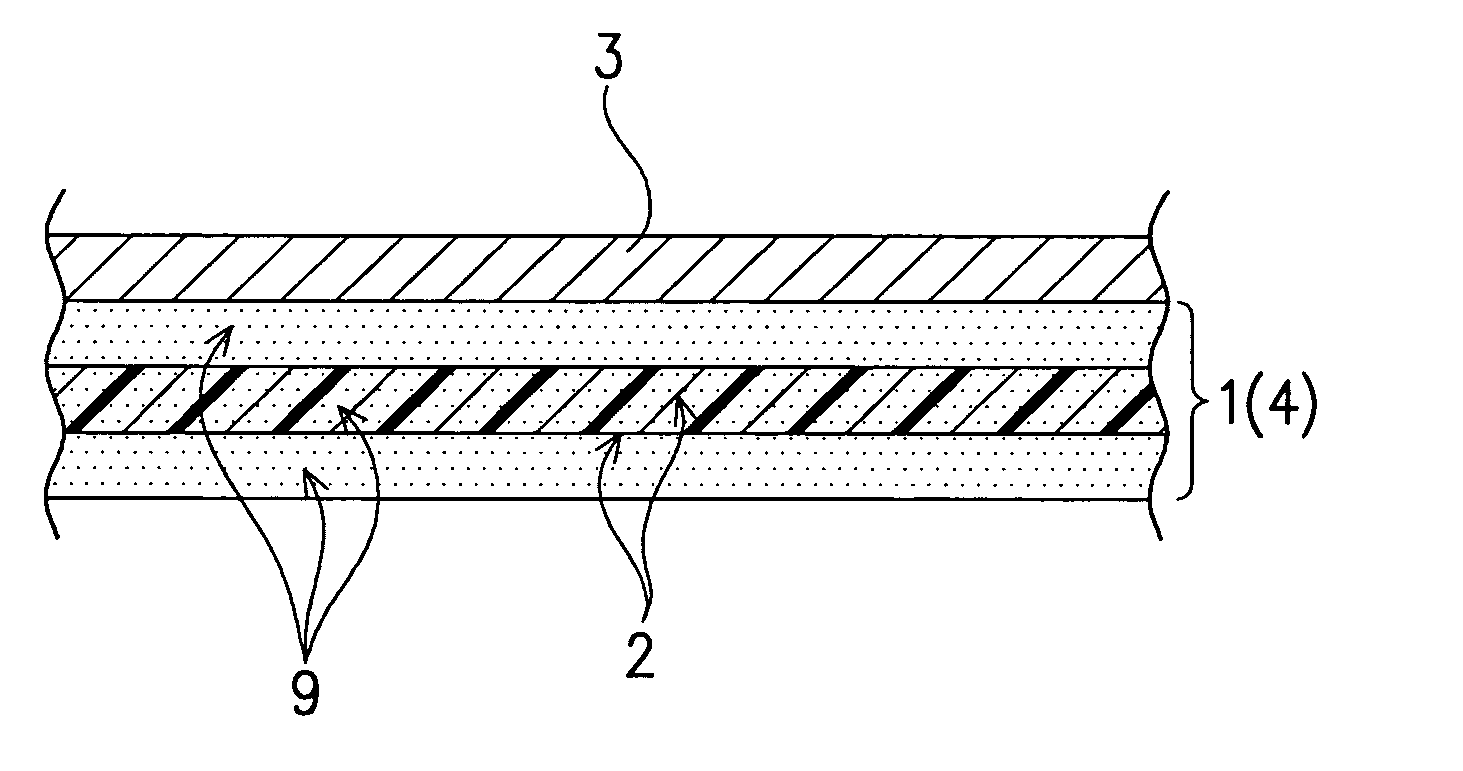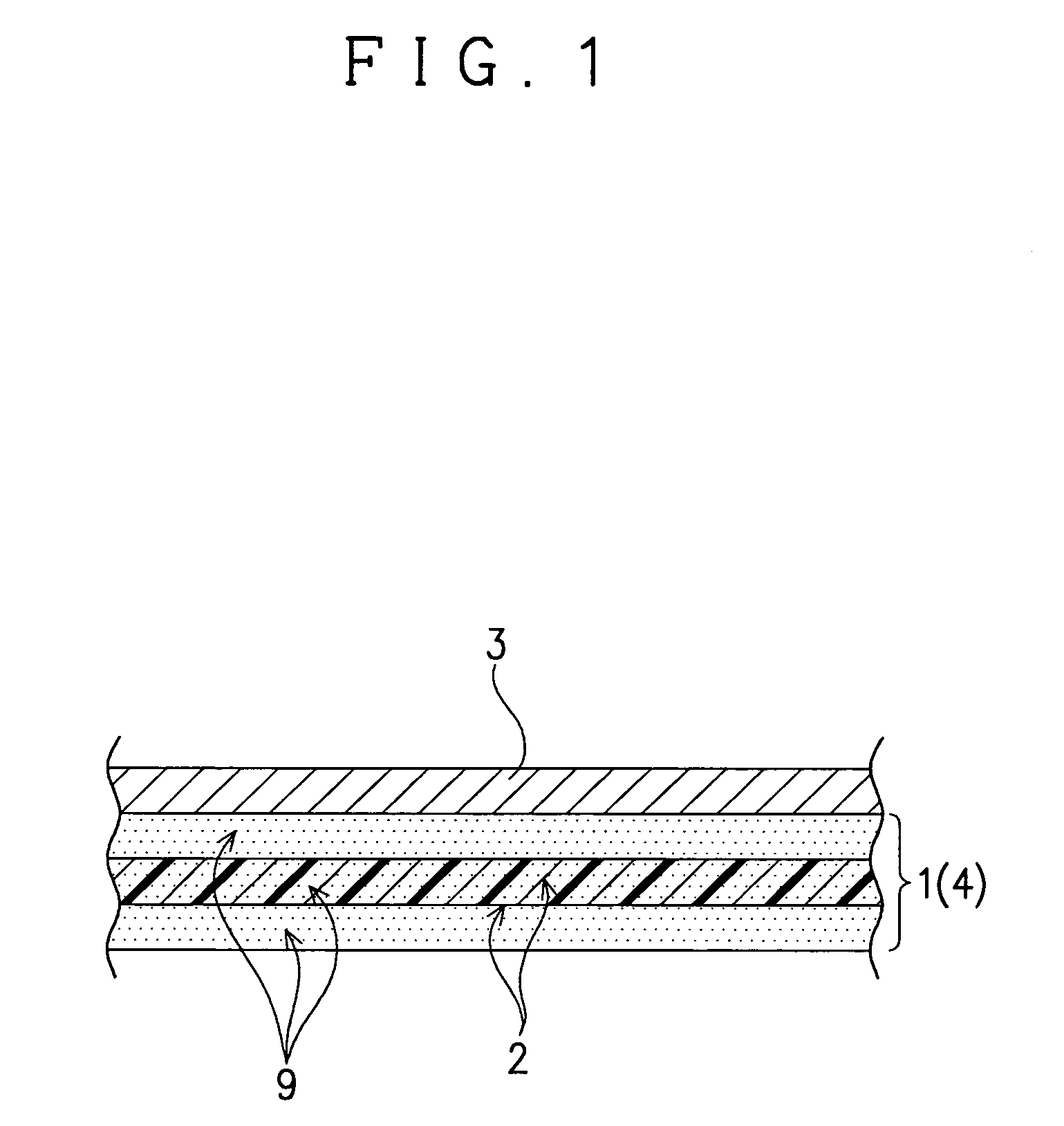Laminated film
a technology of laminate film and film layer, applied in the field of laminate film, can solve the problems of plastic substrates posing a problem of causing misalignment and relatively low mechanical strength, and achieve the effects of excellent mechanical strength, low coefficient of thermal expansion, and excellent display quality
- Summary
- Abstract
- Description
- Claims
- Application Information
AI Technical Summary
Benefits of technology
Problems solved by technology
Method used
Image
Examples
example 1
[0106] An epoxy resin composition was prepared by stirring and mixing: as resin, 27 parts by weight (hereinafter referred only to parts) of 3,4-epoxycyclohexylmethyl-3,4-epoxycyclohexane carboxylate represented by the aforesaid formula (2) and 73 parts of a bisphenol A type epoxy resin (AER250, trade name (epoxy equivalent of 190); manufactured by Asahi Kasei Corporation) represented by the aforesaid formula (1); as a curing agent, 108 parts of methylhexahydrophthahc anhydride represented by the following formula (6); and as a curing accelerator, 3.75 parts of tetra-n-butylphosphonium o,o-diethylphosphorodithioate represented by the following formula (7).
[0107] Then, the above epoxy resin composition was impregnated into glass cloth (“WLT116F”, trade name; manufactured by Nitto Boseki Co., Ltd.) using glass having a refractive index of 1.53, and left to stand for 10 minutes under a condition of a reduced pressure (200 Pa).
[0108] Then, a coating liquid, which was prepared by dissol...
example 2
[0111] A laminated film of Example 2, which has weft yarn of glass cloth oriented at an angle of 3 degrees relative to an absorption axis of a polarizing plate, was obtained in the same manner as Example 1, except that the polarizing plate with a tackifier was cut into a rectangular shape to have an absorption axis oriented at an angle of 48 degrees relative to the long side.
example 3
[0112] A laminated film of Example 3, which has weft yarn of glass cloth oriented at an angle of 5 degrees relative to an absorption axis of a polarizing plate, was obtained in the same manner as Example 1, except that the polarizing plate with a tackifier was cut into a rectangular shape to have an absorption axis oriented at an angle of 50 degrees relative to the long side.
PUM
| Property | Measurement | Unit |
|---|---|---|
| softening point | aaaaa | aaaaa |
| softening point | aaaaa | aaaaa |
| temperature | aaaaa | aaaaa |
Abstract
Description
Claims
Application Information
 Login to View More
Login to View More - Generate Ideas
- Intellectual Property
- Life Sciences
- Materials
- Tech Scout
- Unparalleled Data Quality
- Higher Quality Content
- 60% Fewer Hallucinations
Browse by: Latest US Patents, China's latest patents, Technical Efficacy Thesaurus, Application Domain, Technology Topic, Popular Technical Reports.
© 2025 PatSnap. All rights reserved.Legal|Privacy policy|Modern Slavery Act Transparency Statement|Sitemap|About US| Contact US: help@patsnap.com



